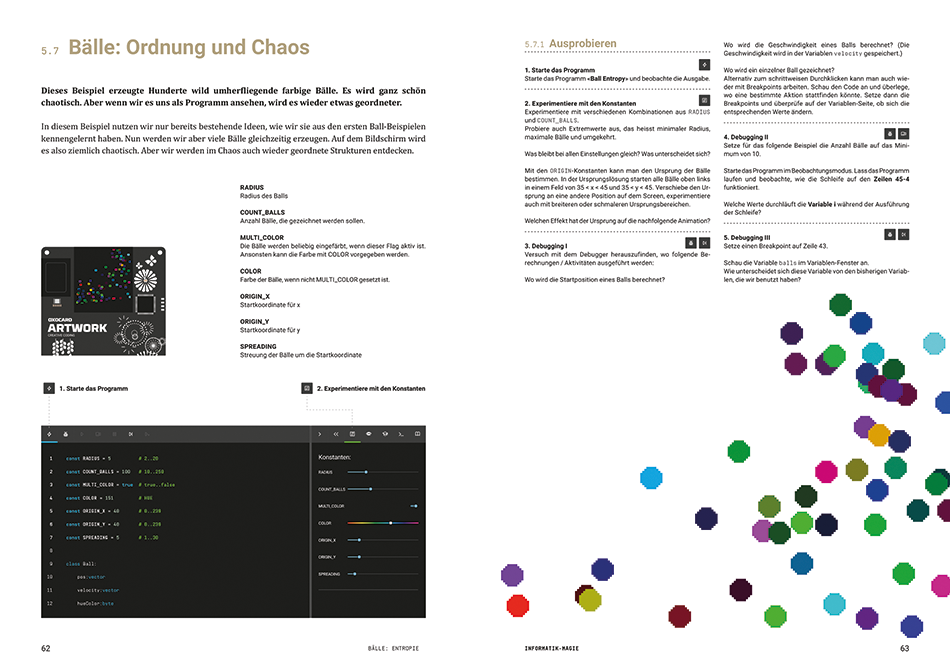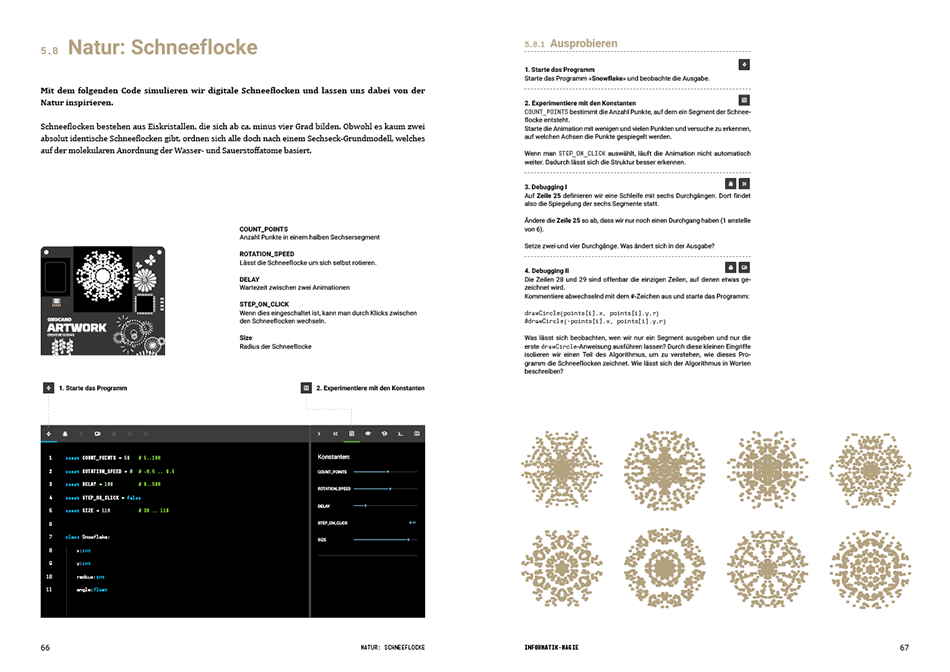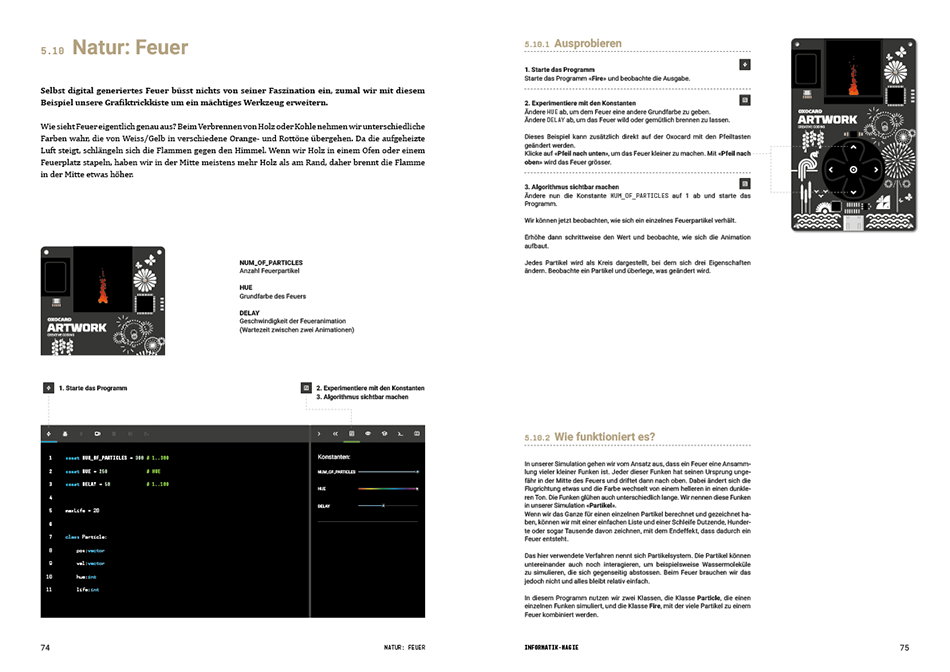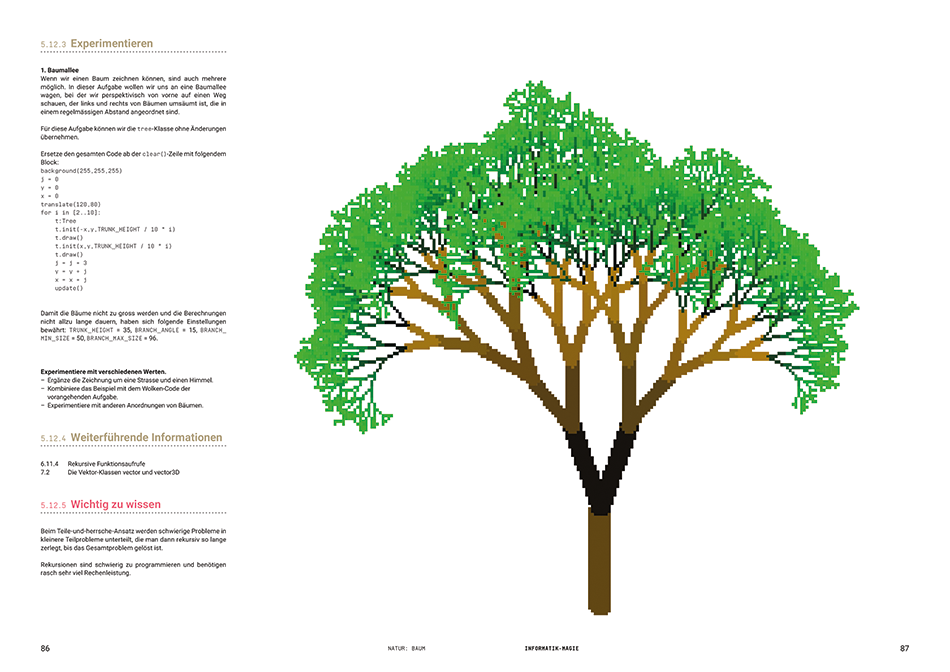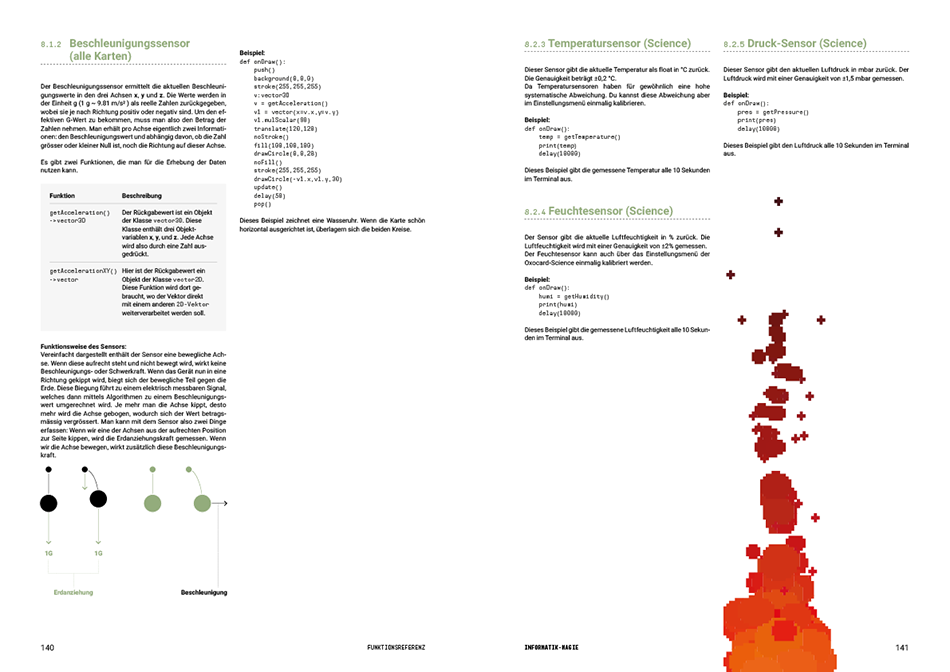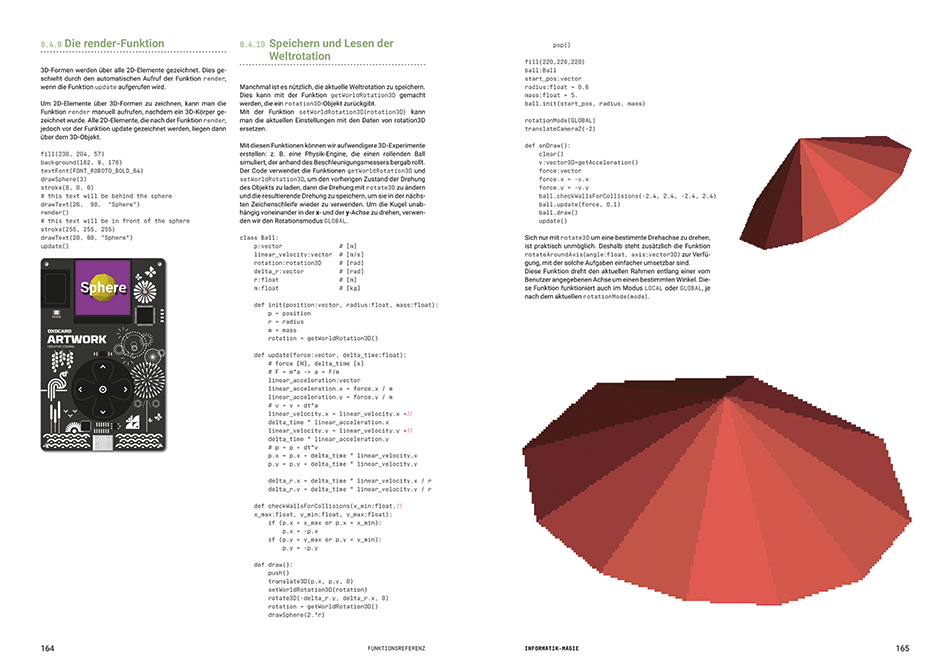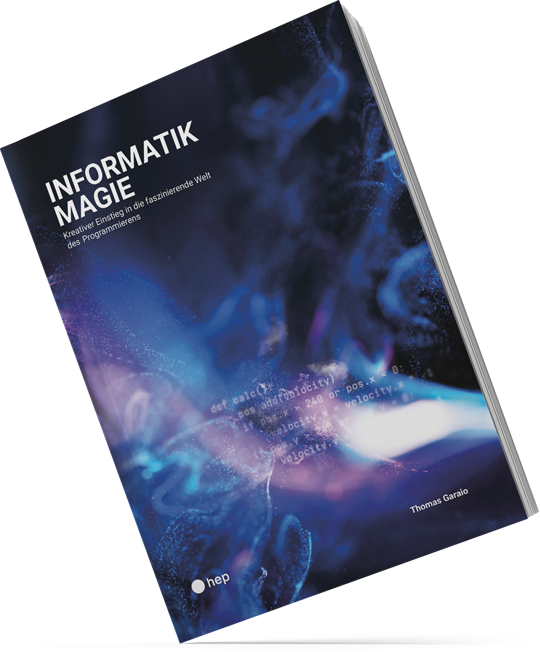
Learn from finished programs through observation and experimentation
This book provides a step-by-step introduction to the fascinating world of computer science through thirteen practical examples.
Now only CHF 40.00
The book takes a different approach than many conventional programming courses. The author uses well-chosen practical examples to explain how the Python-like scripts for the Oxocards work and what happens when you make small changes. The introduction is done via sliders, so that nothing has to be programmed at first. One observes the changed programs during the execution and learns in such a way in a descriptive way, how the scripts function. Small programming exercises round off the chapters.
The thirteen examples are elaborated and documented in detail, yet written in an easy-to-understand manner. They mainly relate to screen output, partly also to sensors. Thus, various clocks are viewed, balls are experimented with, and worms, fire, snowflakes, trees, and much more are animated. The examples elegantly integrate other areas such as trigonometry, vector geometry and kinematics.
The thirteen examples are elaborated and documented in detail, yet written in an easy-to-understand manner. They mainly relate to screen output, partly also to sensors. Thus, various clocks are viewed, balls are experimented with, and worms, fire, snowflakes, trees, and much more are animated. The examples elegantly integrate other areas such as trigonometry, vector geometry and kinematics.
Only after these experimental chapters the basics of the language are explained. It is explained what variables are, how to deal with loops and conditions and how to write your own programs.
The advantage of this approach is that enthusiasm and inspiration are first awakened, and only then does the somewhat more demanding theoretical discussion follow. Depending on the age group, the theoretical block can also be omitted altogether. Through the experimental examination, the basics of programming are nevertheless conveyed.
The book and the Oxocards cover different levels. The primary target group is upper secondary school. However, it is also very well suited to support teacher training (Fundamentals of Media and Computer Science), gifted education and computer science courses at upper secondary schools.
The advantage of this approach is that enthusiasm and inspiration are first awakened, and only then does the somewhat more demanding theoretical discussion follow. Depending on the age group, the theoretical block can also be omitted altogether. Through the experimental examination, the basics of programming are nevertheless conveyed.
The book and the Oxocards cover different levels. The primary target group is upper secondary school. However, it is also very well suited to support teacher training (Fundamentals of Media and Computer Science), gifted education and computer science courses at upper secondary schools.

